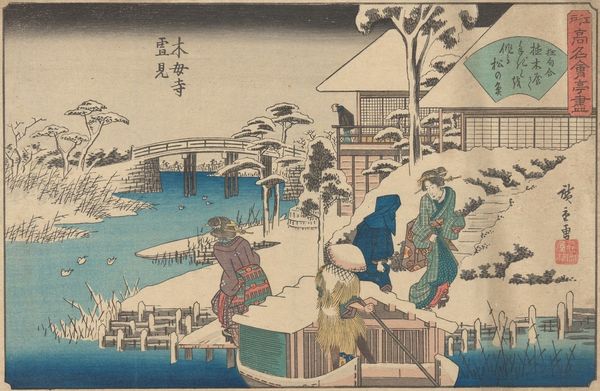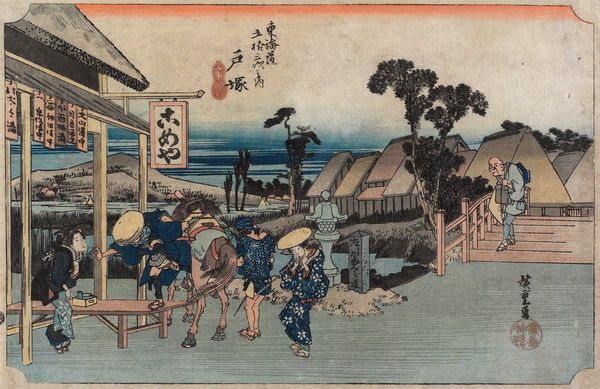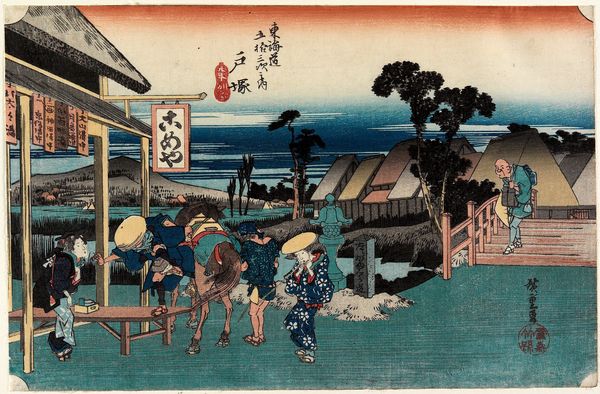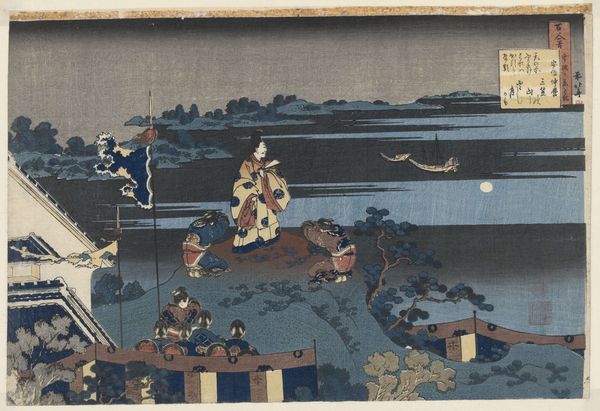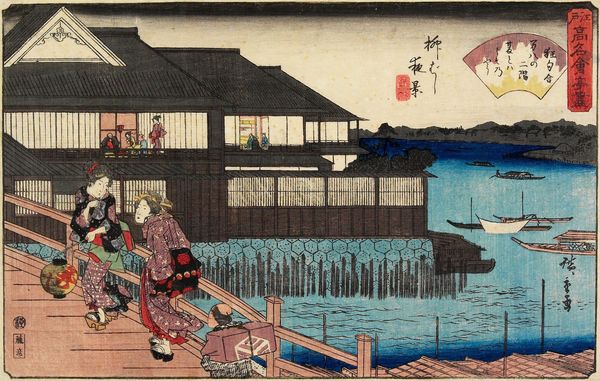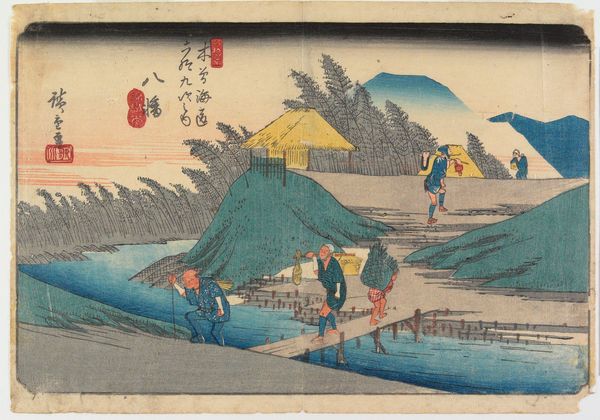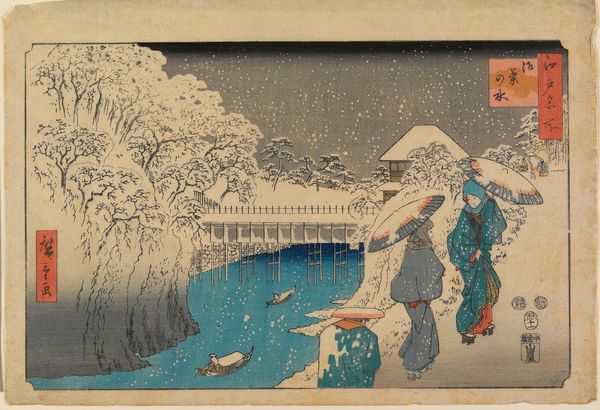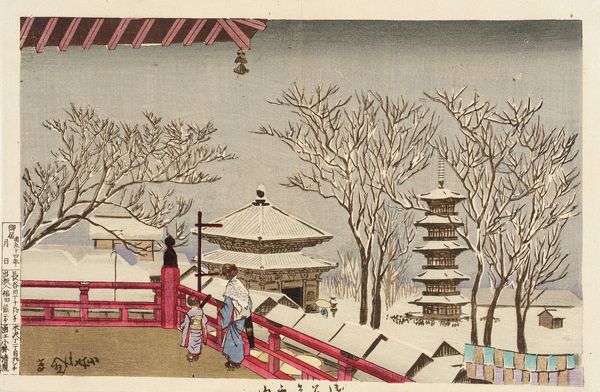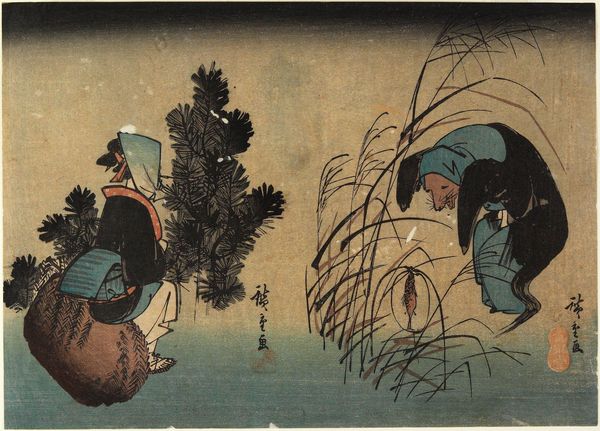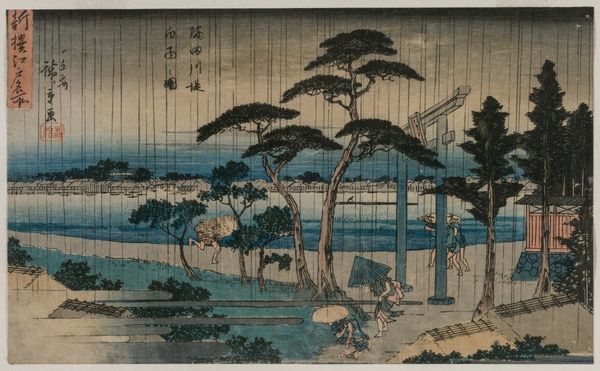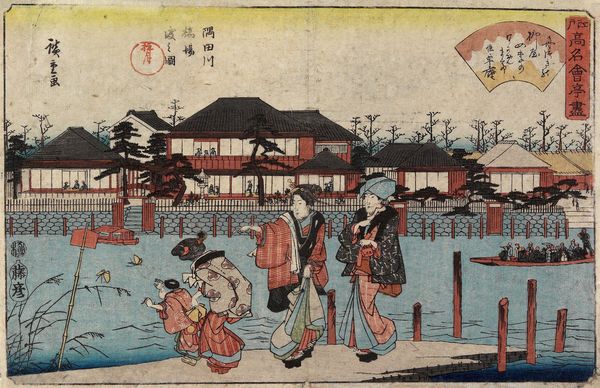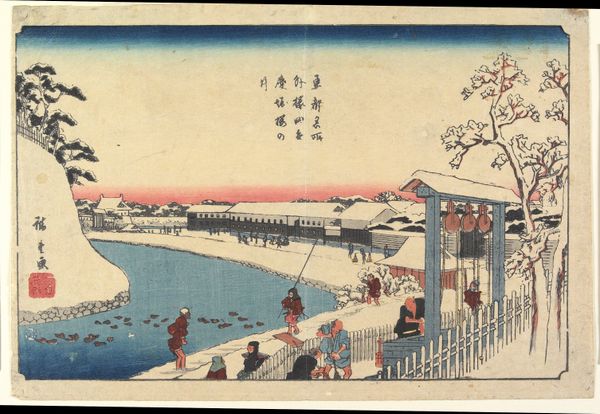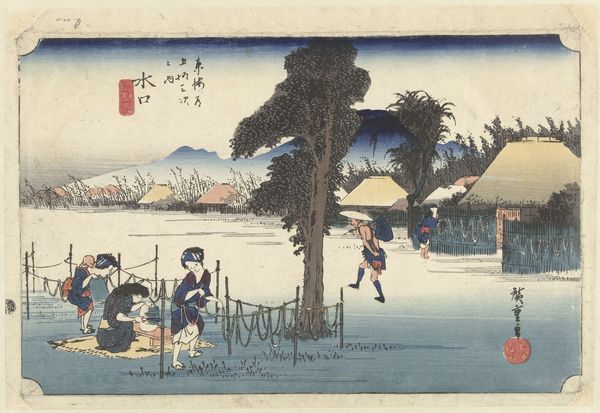
Snow Scene at Mokubo-ji Temple and the Restaurant Uekiya c. 1838 - 1840
0:00
0:00
print, ink, woodblock-print
# print
#
asian-art
#
landscape
#
winter
#
ukiyo-e
#
folk art
#
ink
#
woodblock-print
Dimensions: 9 × 13 7/8 in. (22.9 × 35.2 cm) (image, horizontal ōban)
Copyright: Public Domain
Curator: This print is titled "Snow Scene at Mokubo-ji Temple and the Restaurant Uekiya," created by Utagawa Hiroshige around 1838 to 1840. Editor: What strikes me immediately is the masterful contrast. The somber blue of the water sharply juxtaposed against the pristine, untouched white snow evokes such a serene yet almost melancholic atmosphere. Curator: Hiroshige was deeply embedded within the ukiyo-e tradition, reflecting the socio-cultural values of the Edo period. This work, like much of his oeuvre, offers a lens into the intersection of leisure, landscape, and the societal norms governing interactions between classes within Japan. Editor: The composition, viewed formally, really directs the gaze. Our eye moves from the bottom right corner across the water towards the architecture and trees that dot the scene—it's expertly guided using the elements of color and line. Curator: Exactly, the careful arrangement encourages contemplation about who had access to these leisure spaces—observing the fashion of the figures entering the establishment opens dialogues around gender, class, and mobility during the era. Editor: Let's talk about that striking texture, too. You have areas of smooth expanse contrasted by incredibly delicate lines—I mean, look closely at the texture of the roof and the figures. It's just stunning woodblock work. Curator: We can also read it through the lens of eco-criticism: the subtle integration of nature and civilization, especially how people have made space to co-exist with winter conditions, allowing exploration around themes of climate, cultural adaptation, and resilience against nature. Editor: True. In sum, what feels especially present, is that tension between stark geometry and soft organic form. Between the crisp line of architecture against that beautiful flowing, snow-laden branch, there's almost a dialogue playing out right before your eyes. Curator: Absolutely. Hiroshige has not only depicted a landscape, but constructed a narrative canvas mirroring Edo-period life and allowing viewers a continuous stream of interpreting social frameworks through artistic visualization. Editor: What begins as a serene vista reveals on closer look the masterful technical skill interwoven into cultural critique.
Comments
No comments
Be the first to comment and join the conversation on the ultimate creative platform.
